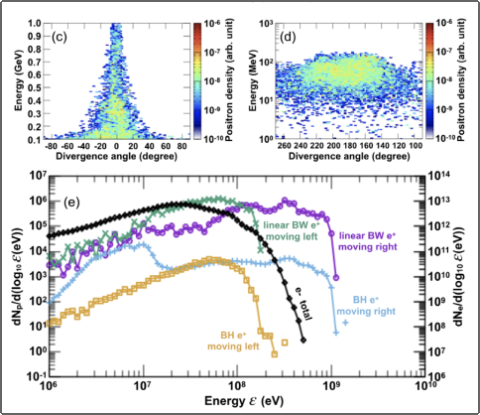K. Sugimoto, Y. He, N. Iwata, I-L. Yeh, K. Tangtartharakul, A. Arefiev, and Y. Sentoku, "Positron generation and acceleration in a self-organized photon collider enabled by an ultraintense laser pulse", Phys. Rev. Letters 131, 065102 (2023).
We discovered a simple regime where a near-critical plasma irradiated by a laser of experimentally available intensity can self-organize to produce positrons and accelerate them to ultrarelativistic energies. The laser pulse piles up electrons at its leading edge, producing a strong longitudinal plasma electric field. The field creates a moving gamma-ray collider that generates positrons via the linear Breit-Wheeler process— annihilation of two gamma rays into an electron-positron pair. At the same time, the plasma field, rather than the laser, serves as an accelerator for the positrons. The discovery of positron acceleration was enabled by a first-of-its-kind kinetic simulation that generates pairs via photon-photon collisions. Using available laser intensities of 1022 W/cm2, the discovered regime can generate a GeV positron beam with a divergence angle of around 10° and a total charge of 0.1 pC. The result paves the way to experimental observation of the linear Breit-Wheeler process and to applications requiring positron beams.
